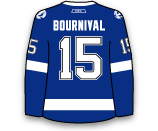Rust did not get into the lineup during his recall. He was scheduled to play this afternoon, he lost his spot in the lineup when the Penguins acquired Rob Klinkhammer on Friday.

Rust did not get into the lineup during his recall. He was scheduled to play this afternoon, he lost his spot in the lineup when the Penguins acquired Rob Klinkhammer on Friday.

Clark, 24, has one assist in seven games with the Ducks during his recall. He heads back to Norfolk, where he has two assists in 11 games.

Rakell, 21, had three assists in 17 games with the Ducks before being sent down. In two games with Norfolk, Rakell tallied ones goal and three assists. He has been recalled because Corey Perry is out with a knee injury.

Schlemko, 27, had one goal and three assists with a minus-7 rating in 15 games with the Coyotes. He heads back to the AHL for the first time since 2010-11. The Coyotes recalled Andrew Campbell to take his spot.
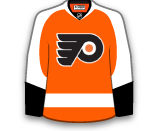
Campbell, 26, was a third round pick (74th overall) of the Kings in 2008. The 6-foot-4 defenseman has three goals and five assists in 20 games in his first year with Portland (AHL). He played three games with the Kings last season, failing to record a point. He is expected to make his Coyotes debut tonight on a pair with Connor Murphy.
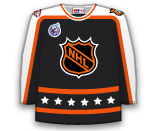
Martinook, 22, was the Coyotes second round pick (58th overall) in 2012. The former Vancouver Giants’ forward has four goals and nine assists (13 points) in 21 games in his third full season with Portland. He is expected to make his NHL debut tonight on a line with Joe Vitale and B.J Crombeen.

Pulock, 20, took part in warmups as the seventh defenseman this afternoon, but did not get into the lineup. His return to the AHL suggests that Lubomir Visnovsky will be good to go on Tuesday.

Kozun, 24, had one assist in five game with the Maple Leafs this season. He has not played since October 17th because of a high-ankle sprain. He had one goal in three games with the Marlies during his conditioning stint.
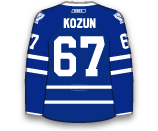
With Travis Hamonic on IR, the Islanders have recalled Pulock, 20, who was their first round pick (15th overall) in 2013. The 6-foot-1, 218 lbs. defenseman has eight goals and five assists (13 points) in 20 games in his first full pro season.

Andreoff has not played since October 31st, so they will send him to Manchester to get some games in.

MacIntyre was recalled to serve as Anton Khudobin’s backup last night with Cam Ward out with a minor lower-body injury. With MacIntyre heading back to the AHL that suggests that Ward is back to 100 percent and will be available for Sunday’s game vs. Detroit.
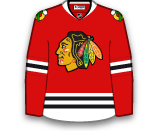
Rust, 22, was the Penguins third round pick (80th overall) in 2010. His recall likely means that Patric Hornqvist’s injury last night will keep him sidelined for a little while at least. Rust has 11 points (7G / 4A) in 22 games with WBS.

Clendening, 22, had a goal and an assist in four games with the Blackhawks during his recall. He had served as a healthy scratch in the last three games, so they are sending him back to Rockford to get some games in.
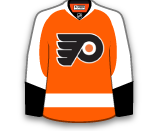
Dahlbeck, 23, has registered two goals and four assists in 22 games with Rockford this season. He has yet to play in an NHL contest, but he is expected to play sometime shortly. The 6-foot-2 defenseman was the Blackhawks third round pick (79th overall) in 2011.
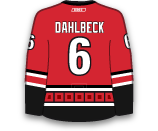
The Devils are battling a ton of injuries right now, so they have recalled Sislo, who has 10 points (6G / 4A) in 20 games with Albany this season. He has one assist in 16 career NHL games.
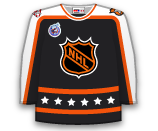
The Stars placed Lindback on waivers on Wednesday and recalled Jussi Rynnas to take his place as the Stars number-2 net minder. Lindback, who signed with the Stars this offseason, was dreadful, going 0-5-0 with a 4.64 GAA and .861 SV% in four starts and one relief appearance.
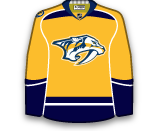
Brouillette, 27, has played in 11 games this season with the St. John’s IceCaps collecting four points (2G / 2A) and four penalty minutes. Both of the defenceman’s goals scored this season have been game winners for the IceCaps. He comes up after the Jets lost Zach Bogosian on Wednesday for 4-6 weeks.
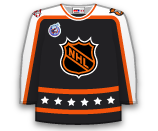
Lindbohm was sent down on Monday, mostly because the Blues were expecting to have Jay Bouwmeester back last night vs. Chicago. With Bouwmeester out, another defenseman may have suffered an injury last night and Lindbohm could be in tonight vs. the Predators.

Robin Lehner is out with a minor undisclosed injury, so Hammond has been recalled to backup Craig Anderson tonight vs.the Islanders. Hammond has gone 5-8-2 with a 3.22 GAA and .910 SV% in the AHL.
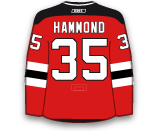
Bournival has been sidelined with a shoulder injury since November 5th, so the Habs have sent him back to the AHL to get three games in over the weekend. Expect him to be recalled next week and return to the lineup soon.
